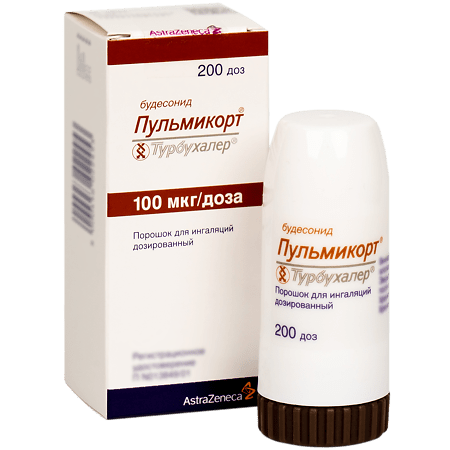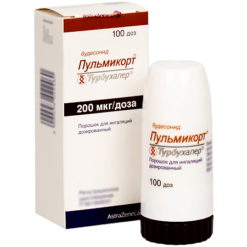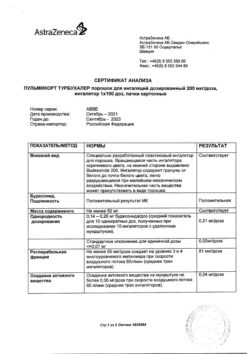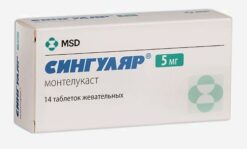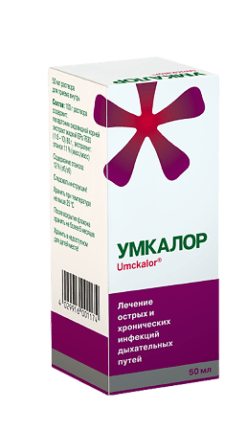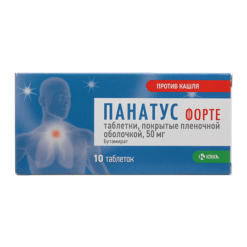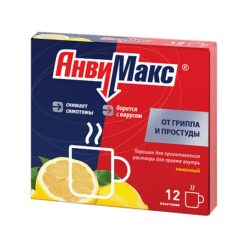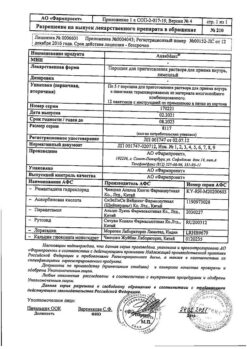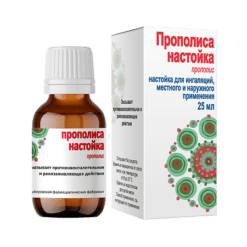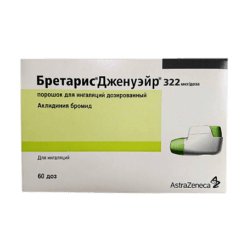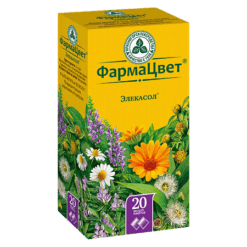No products in the cart.
Pulmicort Turbukhaler, 100 mcg/dose 200 doses
€16.85 €14.04
Description
Pharmacotherapeutic group: glucocorticosteroid for topical use
ATC code: Pharmacological properties
Pharmacodynamics
Budesonide is a glucocorticosteroid with strong local anti-inflammatory effects.
The exact mechanism of action of glucocorticosteroids in the treatment of bronchial asthma is not fully understood. Anti-inflammatory effects, such as inhibition of release of inflammatory mediators and cytokine-mediated immune response, may be the most important. The affinity of budesonide for glucocorticosteroid receptors is 15 times greater than that of prednisolone.
The anti-inflammatory effect of budesonide is mediated by a reduction in the degree of airway obstruction during early and late allergic response. Budesonide reduces airway reactivity in response to histamine and methacholine inhalation.
The sooner budesonide treatment is initiated from the time of diagnosis of persistent bronchial asthma, the greater improvement in lung function should be expected.
A dose-dependent effect on plasma and urinary cortisol levels has been shown with Pulmicort Turbuhaler administration. At the recommended doses, the drug has significantly less effect on adrenal function than prednisone at 10 mg as shown in ACTH tests.
Use of budesonide at doses up to 400 mcg per day in children over 3 years of age did not result in systemic effects. Biochemical signs of the drug systemic effect may be observed when using the drug in the dose from 400 to 800 mcg per day. When the dose of 800 mcg per day is exceeded, systemic effects of the drug are common.
The use of glucocorticosteroids for the treatment of bronchial asthma may cause growth retardation.
Initially small, usually transient growth retardation (about 1 cm) has been noted, usually during the first year of treatment. Long-term studies in clinical settings have shown that children and adolescents treated with inhaled budesonide achieve, on average, the estimated adult height. However, in a long-term double-blind study primarily without titration of the budesonide dose to the lowest effective dose, the growth of children and adolescents receiving inhaled budesonide was on average 1.2 cm shorter than that of the placebo group when they reached adulthood (see Dosage and Growth Control recommendations in the Dosage and Administration and Precautions sections).
Therapy with inhaled budesonide once or twice daily has been shown to be effective in preventing physical effort asthma.
Pharmacokinetics
Absorption
Inhaled budesonide is rapidly absorbed. After inhalation with Turbuhaler, about 25-35% of the measured dose is absorbed into the lungs. Maximum plasma concentration is reached 30 minutes after inhalation. Systemic bioavailability of the drug is about 38% of the administered dose.
Metabolism and distribution
Binding to plasma proteins is on average 90%. The volume of distribution of budesonide is approximately 3 L/kg. After absorption budesonide undergoes intensive (over 90%) biotransformation in the liver to form metabolites with low glucocorticosteroid activity. The glucocorticosteroid activity of the major metabolites 6b-hydroxybudesonide and 16a-hydroxyprednisolone is less than 1% of the glucocorticosteroid activity of budesonide.
Evolution
Budesonide is metabolized mainly with participation of the CYP3A4 enzyme. Metabolites are excreted unchanged in the urine or in conjugated form. A small amount of unchanged budesonide is excreted in the urine. Budesonide has high systemic clearance (about 1.2 l/min). Pharmacokinetics of budesonide is proportional to the administered dose of the drug.
Pharmacokinetics of budesonide in children and patients with impaired renal function is unknown. In patients with liver disease the time of budesonide retention in the body may be prolonged.
Indications
Indications
The drug Pulmicort Turbuhaler is used in adults and children aged 6 years and older for:
• Bronchial asthma requiring maintenance treatment (therapy) with glucocorticosteroids to control the inflammatory process.
• Chronic obstructive pulmonary disease (COPD).
Pharmacological effect
Pharmacological effect
Pharmacodynamic properties
Special instructions
Special instructions
Impact on the ability to drive vehicles and operate machinery
The drug Pulmicort does not affect the ability to drive vehicles and operate machinery.
Active ingredient
Active ingredient
Budesonide
Composition
Composition
Active ingredient: budesonide.
Pulmicort Turbuhaler, 100 mcg/dose, dosed inhalation powder Each dose delivered contains 100 mcg of budesonide.
Pulmicort Turbuhaler, 200 mcg/dose, dosed inhalation powder Each dose delivered contains 200 mcg of budesonide.
Pregnancy
Pregnancy
Pregnancy
Animal studies have shown that corticosteroids may cause fetal abnormalities, but these data cannot be extrapolated to humans receiving corticosteroids at recommended doses.
When pregnant women took budesonide, no increase in the risk of developmental abnormalities in the fetus was detected; however, the risk of their development cannot be completely excluded, therefore, during pregnancy, the minimum effective dose of budesonide should be used, not forgetting the possibility of worsening the course of bronchial asthma.
When prescribing the drug, the ratio of the expected benefit for the mother and the potential risk for the child should be taken into account.
Lactation
Budesonide is excreted in breast milk, however, when using the drug Pulmicort Turbuhaler in therapeutic doses, effects on the infant are not expected. When prescribing the drug, the ratio of the expected benefit for the mother and the potential risk for the child should be taken into account.
Contraindications
Contraindications
Hypersensitivity to budesonide.
Children’s age up to 6 years.
Special instructions and precautions for use
With caution: liver cirrhosis, pregnancy, breastfeeding.
General information
Budesonide is not intended for the rapid relief of acute attacks of bronchial asthma when inhaled short-acting bronchodilator is required.
Patients should be instructed to contact their physician if the effectiveness of therapy with short-acting bronchodilators decreases, since an independent increase in the frequency of use of the drug may lead to a delay in the initiation of adequate treatment. In case of sudden deterioration of the condition, a short course of treatment with oral corticosteroids should be considered.
Bronchospasm
As with other inhaled therapy, paradoxical bronchospasm may occur with an immediate increase in wheezing after administration of the drug. If this phenomenon occurs, treatment with inhaled budesonide should be stopped immediately, the patient examined and, if necessary, alternative therapy prescribed. Pneumonia in patients with COPD
Clinical studies and meta-analyses have shown that the use of inhaled glucocorticosteroids during maintenance treatment of COPD may lead to an increased risk of pneumonia, including pneumonia requiring hospitalization. Clinicians should be aware of the possibility of pneumonia in patients with COPD, since the clinical signs of pneumonia and exacerbation of the disease often overlap. There is evidence that the risk of pneumonia increases with increasing doses of corticosteroids, but this pattern has not been demonstrated in all studies.
There is no convincing clinical evidence of intraclass differences among inhaled corticosteroid drugs in relation to the magnitude of the risk of pneumonia.
Risk factors for pneumonia in patients with COPD include ongoing smoking, older age, low body mass index and severe COPD.
Concomitant use of other drugs
Coadministration of budesonide with ketoconazole, itraconazole, human immunodeficiency virus (HIV) protease inhibitors, or other strong CYP3A4 inhibitors should be avoided. If budesonide and ketoconazole or itraconazole or other strong CYP3A4 inhibitors are co-administered, the time between doses should be increased as much as possible.
Oral candidiasis
Oral candidiasis may occur during treatment with inhaled glucocorticosteroids. This infection may require treatment with appropriate antifungal medications and may require discontinuation of treatment in some patients.
To reduce the risk of developing fungal infections of the oropharyngeal mucosa, the patient should be instructed to thoroughly rinse the mouth with water after each inhalation of the drug.
Switching from taking oral glucocorticosteroids to Pulmicort
Due to the possible risk of weakening pituitary-adrenal function, special attention should be paid to patients who are transferred from oral glucocorticosteroids to taking Pulmicort. Also, special attention should be paid to patients who have taken high doses of glucocorticosteroids as emergency therapy, or who have been receiving the highest recommended doses of inhaled glucocorticosteroids for a long time. In stressful situations, these patients may exhibit signs and symptoms of adrenal insufficiency. In case of stress or in cases of planned surgery, additional therapy with systemic glucocorticosteroids is recommended.
Particular attention should be paid to patients who are transferred from systemic to inhaled glucocorticosteroids (Pulmicort Turbuhaler), or in cases where a violation of the pituitary-adrenal function can be expected. In such patients, the dose of systemic glucocorticosteroids should be reduced with extreme caution and adrenal hormonal function should be monitored. Patients may also need to be prescribed oral glucocorticosteroids during stressful situations such as trauma, planned surgery, etc.
When switching from oral glucocorticosteroids to Pulmicort Turbuhaler, patients may experience previously observed symptoms, such as muscle pain or joint pain. In such cases, a temporary increase in the dose of oral corticosteroids may be necessary. In rare cases, symptoms such as fatigue, headache, nausea and vomiting may occur, indicating systemic glucocorticosteroid deficiency.
Systemic effects of inhaled glucocorticosteroids
Systemic effects of inhaled corticosteroids may occur, especially when high doses are used over a long period of time. The likelihood of developing these effects is much lower than when taking oral corticosteroids.
Possible systemic effects include Cushing’s syndrome, Cushingoid features, adrenal suppression, growth retardation in children and adolescents, decreased bone mineral density, cataracts, glaucoma, and, less commonly, a range of psychological or behavioral effects including psychomotor hyperactivity, sleep disturbances, anxiety, depression, or aggression (especially in children). Therefore, it is important that the dose of inhaled glucocorticosteroids is adjusted to the minimum that maintains effective control of symptoms of asthma or COPD.
Replacing oral glucocorticosteroids with inhaled ones sometimes leads to the manifestation of existing allergies, rhinitis and eczema, which were previously treated with systemic drugs.
Use in patients with impaired renal function
Decreased renal function affects the elimination of glucocorticosteroids, leading to decreased elimination and increased systemic exposure. Possible systemic adverse reactions should be taken into account.
Impact on growth
It is recommended to regularly monitor the growth of children receiving long-term treatment with inhaled glucocorticosteroids. If growth slows, therapy should be reconsidered to reduce the dose of inhaled glucocorticosteroids. The benefits of glucocorticosteroid therapy and the possible risks of growth retardation must be carefully assessed. In addition, the possibility of referring the patient to a pediatric pulmonologist should be considered.
Visual impairment
With systemic and local use of glucocorticosteroids, visual impairment may occur. If a patient experiences symptoms such as blurred vision or other disturbances, consider referring the patient to an ophthalmologist to evaluate possible causes, which may include cataracts, glaucoma, or rare diseases such as central serous chorioretinopathy (CSCR), which has been reported with the use of systemic and topical corticosteroids.
Children
In children and adolescents receiving treatment with glucocorticosteroids (regardless of the method of delivery) for an extended period, it is recommended to regularly monitor growth parameters.
Side Effects
Side Effects
Summary of Adverse Reactions
According to the frequency of occurrence, adverse reactions are classified as follows: very often (≥1/10), often (≥1/100, but <1/10), infrequently (≥1/1000, but <1/100), rarely (≥1/10000, but <1/1000), very rarely (<1/10000), frequency unknown (cannot be estimated based on available data).
Patients taking the drug may experience the following adverse reactions:
Infections and infestations: often – oropharyngeal candidiasis, pneumonia (in patients with COPD). Immune system disorders: rarely – immediate and delayed hypersensitivity reactions, including rash, contact dermatitis, urticaria, angioedema, bronchospasm and anaphylactic reaction.
Endocrine disorders: rarely – signs and symptoms of systemic effects of glucocorticosteroids, including adrenal suppression and growth retardation.
Mental disorders: infrequently – anxiety, depression; rarely – nervousness, excitability, behavioral disturbances; frequency unknown – sleep disturbances, psychomotor hyperactivity, aggression.
Nervous system disorders: uncommon – tremor.
Violations of the organ of vision: infrequently – cataracts, blurred vision (see section Special instructions and precautions for use); frequency unknown – glaucoma.
Disorders of the respiratory system, chest and mediastinal organs: often – mild irritation of the pharyngeal mucosa, cough; rarely – bronchospasm, dysphonia, hoarseness.
Skin and subcutaneous tissue disorders: rarely – bruising.
Muscle, skeletal and connective tissue disorders: uncommon – muscle spasm.
Description of selected adverse reactions
Infections and infestations
Taking into account the risk of developing oropharyngeal candidiasis, the patient should thoroughly rinse his mouth with water after each inhalation of the drug.
Systemic action
In rare cases, symptoms caused by the systemic effect of glucocorticosteroids, including adrenal hypofunction, may occur. Nausea, changes in taste, hypercortisolism, hypocortisolism, cataracts, glaucoma, difficulty swallowing, slowed growth (in children and adolescents), and decreased bone density may also occur.
Mental disorders
Results from clinical studies involving 13,119 patients receiving inhaled budesonide and 7,278 patients receiving placebo were pooled. The incidence of anxiety was 0.52% with inhaled budesonide and 0.63% with placebo; the incidence of depression was 0.67% with inhaled budesonide and 1.15% with placebo.
Visual disorders
Cataracts have also been reported as an uncommon adverse event in the placebo group in placebo-controlled studies.
Children and teenagers
Due to the risk of growth retardation in children, growth should be monitored regularly as described in the section Warnings and Precautions for Use.
Interaction
Interaction
No interaction of budesonide with other drugs used in the treatment of bronchial asthma has been observed.
Budesonide is metabolized mainly with the participation of the CYP3A4 isoenzyme. Ketoconazole (200 mg once daily) increases plasma concentrations of oral budesonide (3 mg once daily) by an average of 6-fold when administered together. When taking ketoconazole 12 hours after taking budesonide, the concentration of the latter in the blood plasma increased by an average of 3 times. There is no information about such an interaction when taking inhaled budesonide, but it is assumed that in this case an increase in the concentration of budesonide in the blood plasma should be expected. These drugs should not be coadministered due to lack of data. If it is necessary to prescribe ketoconazole and budesonide together, the time between taking the drugs should be increased to the maximum possible. A dose reduction of budesonide should also be considered.
Other potential inhibitors of the CYP3A4 enzyme (eg, itraconazole, HIV protease inhibitors) also cause a significant increase in plasma concentrations of budesonide.
Limited data on this interaction with high-dose inhaled budesonide indicate that concomitant use of itraconazole 200 mg once daily with inhaled budesonide (1000 mcg single dose) may result in a marked increase in plasma budesonide levels (on average fourfold).
Increased plasma concentrations of glucocorticosteroids and increased effects were observed in women also receiving estrogens and contraceptive steroids, but no effect was observed when using budesonide and concomitantly taking low doses of combined oral contraceptives.
The ACTH (adrenocorticotropic hormone) stimulation test to diagnose pituitary insufficiency may show falsely low results depending on the suppression of the hypothalamic-pituitary-adrenal axis by high doses of glucocorticosteroids, including budesonide.
Overdose
Overdose
It is expected that in case of acute overdose of Pulmicort Turbuhaler, even in doses exceeding the recommended ones, no clinical manifestations occur. With prolonged use of the drug in high doses, a systemic glucocorticosteroid effect may develop in the form of hypercortisolism and suppression of adrenal function.
Storage conditions
Storage conditions
Store at a temperature below 30 C, out of the reach of children.
Shelf life
Shelf life
2 years.
Do not use after the expiration date indicated on the package.
Manufacturer
Manufacturer
AstraZeneca AB, Sweden
Additional information
| Shelf life | 2 years. Do not use after the expiration date stated on the package. |
|---|---|
| Conditions of storage | Store at temperatures below 30 C, out of the reach of children. |
| Manufacturer | AstraZeneca AB, Sweden |
| Medication form | metered inhalation powder |
| Brand | AstraZeneca AB |
Other forms…
Related products
Buy Pulmicort Turbukhaler, 100 mcg/dose 200 doses with delivery to USA, UK, Europe and over 120 other countries.

